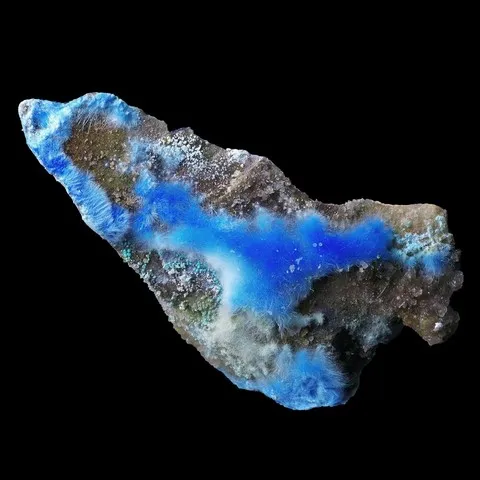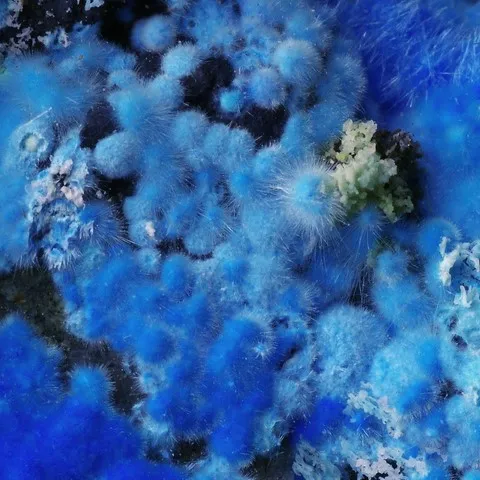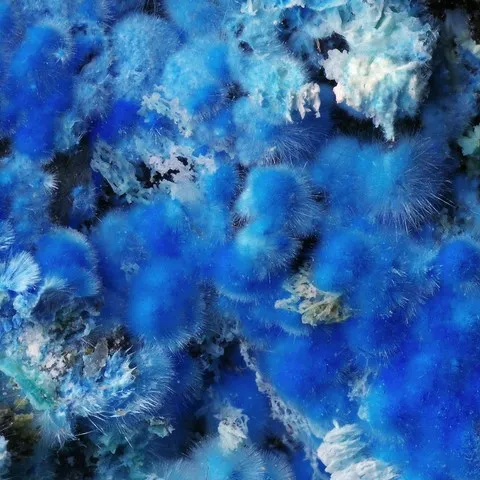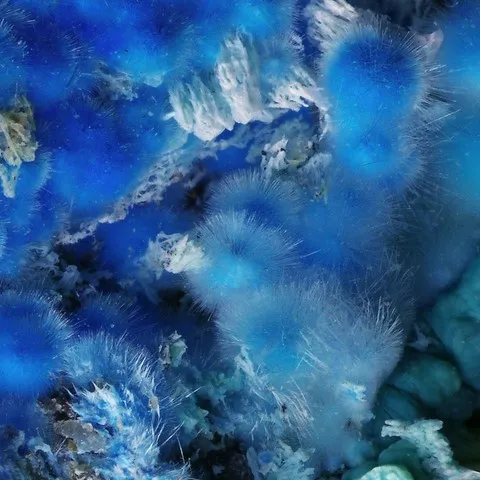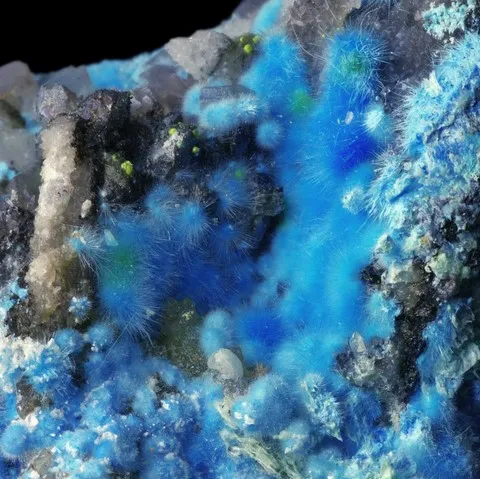CYANOTRICHITE
Class : Sulphates, chromates, molybdates
Subclass : Hydrated sulphates
Crystal system : Orthorhombic
Chemistry : Cu4Al2(SO4)(OH)12 . 2H2O
Rarity : Rare
Cyanotrichite is a secondary mineral of the oxidation zone of copper deposits. Its genesis seems facilitated by an acid environment and a clayey surrounding. It owes its name to the Greek kuanos (blue) and thrix (hair) in connection with its color and its habit in tufts of acicular crystals. It comes in orthorhombic fibers assembled in radiate rosettes, urchins with velvety aspect and silky luster. Its sky blue to azure blue color and its pale blue streak are characteristic as well as its association with other arsenates and sulphates of copper (chalcophyllite, spangolite, brochantite, adamite, etc...). It is a mineral little known to collectors who has no particular use.
Cyanotrichite in the World
Cyanotrichite in France
In France is among the best specimens worldwide for the species at the Cap Garonne mine (Var), with acicular crystals that can exceed 15 mm grouped fibrin-bound aggregates. It is found in microcrystals in many deposits such as : Port Brûlé (Nièvre), Treille Mine (Haut-Rhin), Tistoulet and Salsigne Mines (Aude), Couloumier Mine (Ariège), La Fage and La Baume (Aveyron), Valcroze (Gard), La Moutoune (Hérault), St. Lucie mine (Lozère), Mas Vicenç (Pyrénées-Orientales), etc ...
Twinning
Cyanotrichite has no twinned crystals known.
Fakes and treatments
No scam known for this mineral. An anionic CO3 group can be associated with the SO4 group to form carbonate-cyanotrichite, a mineral species close to cyanotrichite, belonging according to the authors to carbonates or sulfates. It can easily be confused with the latter.
Hardness : 1 to 3
Density : 2.76
Fracture : Undetermined
Trace : Blue
TP : Translucent to transparent
RI : 1.588 to 1.6554
Birefringence : 0.067
Optical character : Biaxial +
Pleochroism : Weak
Fluorescence : None
Solubility : All acids
Magnetism : None
Radioactivity : None

